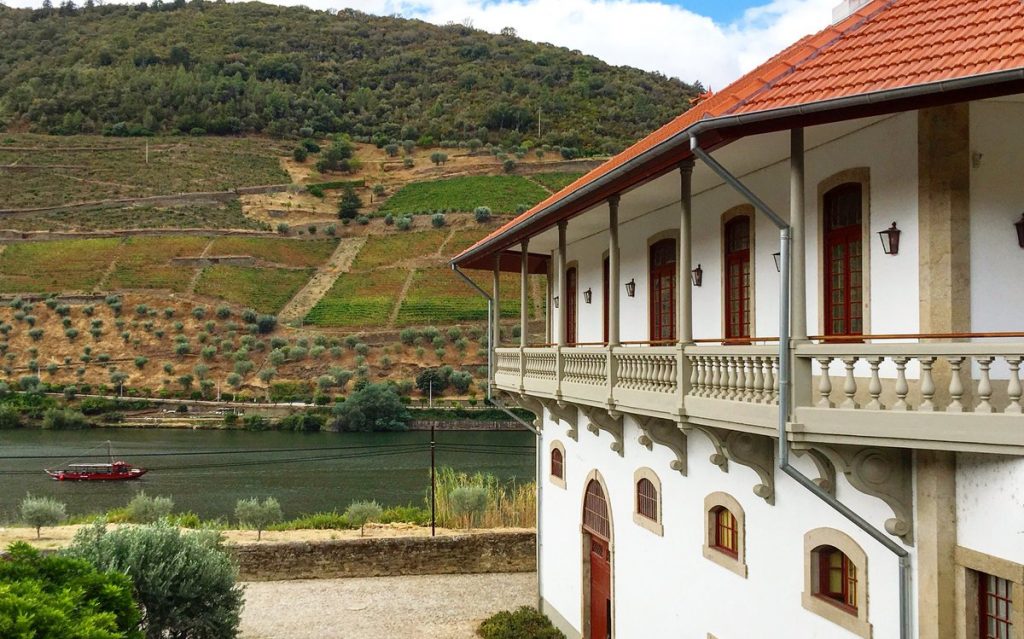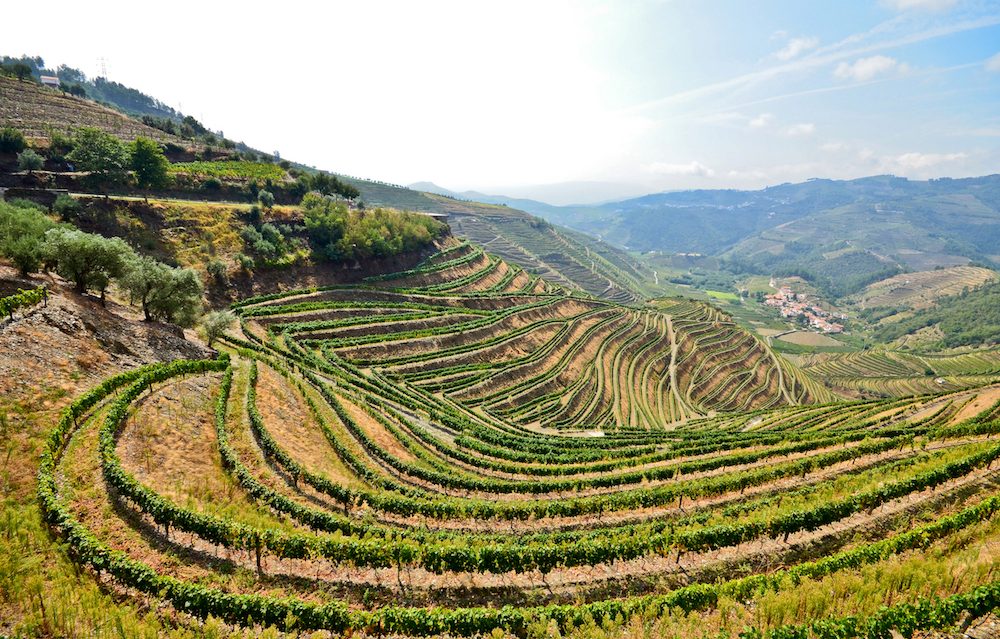It often has been said, “Show me a great wine region and I’ll show you a river.”
 Portugal’s Douro River, one of the major waterways of the Iberian Peninsula, is a perfect example. It runs for a few hundred miles across the high plains of central Spain before crossing the Portuguese border near the isolated village of Barca D’Alva. From there it flows west for another 350-miles to the sea exposing a blanket of rich terroir as it cuts its way through the rugged valley’s schist laden hillsides. Against all odds the great river has spawned a great wine region in one of the world’s least hospitable and most remote locations.
Portugal’s Douro River, one of the major waterways of the Iberian Peninsula, is a perfect example. It runs for a few hundred miles across the high plains of central Spain before crossing the Portuguese border near the isolated village of Barca D’Alva. From there it flows west for another 350-miles to the sea exposing a blanket of rich terroir as it cuts its way through the rugged valley’s schist laden hillsides. Against all odds the great river has spawned a great wine region in one of the world’s least hospitable and most remote locations.
The climate in the Douro is pleasantly Mediterranean but the landscape is decidedly unforgiving, featuring irregular rocky outcrops sprinkled along twisted hillsides punctuated by awkward looking man-made stone terraces. Were it not for these primitive foundations holding the hillsides, it would be impossible to establish vineyards along the dramatically sloping terrain. Even with their help literally keeping the land from sliding down the hill, the labor involved is punishing. But then there’s the results and that’s where the Douro stands apart. There is no other wine like Port and there’s no other wine region even remotely similar to the Douro.
The Douro DOC has enjoyed a lot of media attention lately both for new discoveries and ownership developments in the vineyards. Following a sustained period of innovations in processing (the Symington’s famous robotic lagar for crushing grapes, thermo-regulated fermentation equipment, etc.) the focus on new developments in the Douro has segued to the vineyards where better tools have led to a keener understanding of plant material and viticultural practices.



 Prats and Symington is a recently launched joint project between the Symington family from Portugal and Bruno Prats, former owner of leading Bordeaux estate Château Cos d’Estournel. Bruno Prats is the epitome of innovative thinking and a respected elder statesmen in the international fine wine business. He’s made wine in both hemispheres and is considered one of the world’s most accomplished vignerons. The Symington family, with Scottish, English and Portuguese ancestry has been present in the Douro for five generations — since 1882 — and through the current generation’s great grandmother, the family’s link to wine business in the Douro spans 14 generations going back to the very beginnings of the trade.
Prats and Symington is a recently launched joint project between the Symington family from Portugal and Bruno Prats, former owner of leading Bordeaux estate Château Cos d’Estournel. Bruno Prats is the epitome of innovative thinking and a respected elder statesmen in the international fine wine business. He’s made wine in both hemispheres and is considered one of the world’s most accomplished vignerons. The Symington family, with Scottish, English and Portuguese ancestry has been present in the Douro for five generations — since 1882 — and through the current generation’s great grandmother, the family’s link to wine business in the Douro spans 14 generations going back to the very beginnings of the trade.
